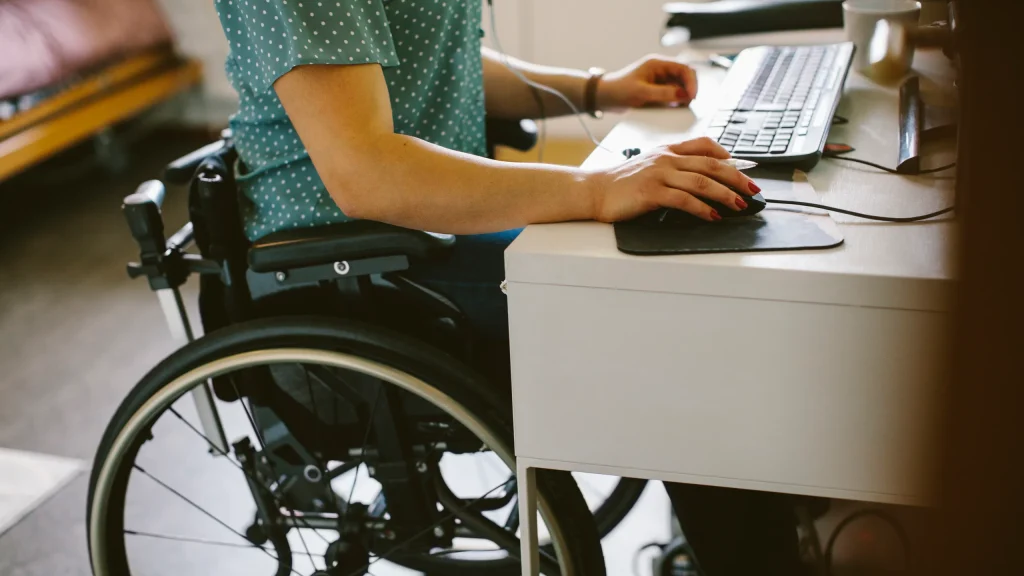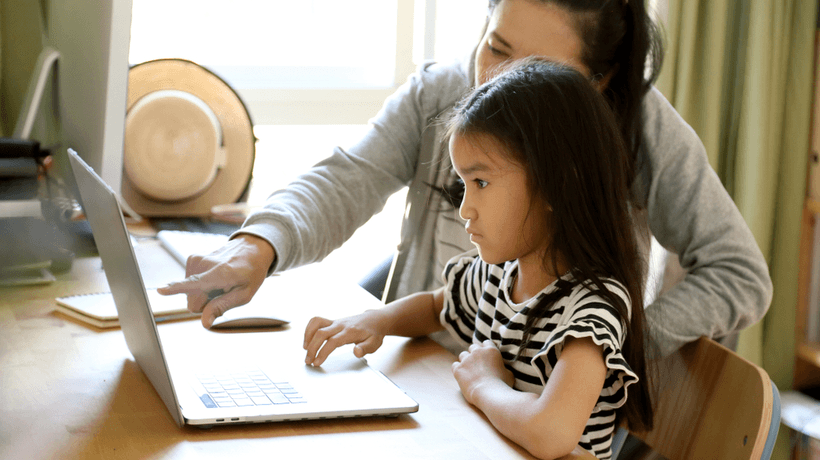The importance of offering online training for people with disabilities
We find ourselves in a complicated time. The economic situation is not the best, there are too many prejudices and discrimination.
Although policies seem to work towards the accessibility and ‘visibility’ of people with disabilities, opportunities for insertion into the complicated labor market must be facilitated.

E-learning is a key teaching solution for the personal and professional development of people with disabilities. Luckily, the recruitment rate of people in this situation seems to increase, so having good training will be decisive in achieving inclusion easily.
Some people with disabilities indeed have special characteristics that allow them to acquire superior skills compared to their peers. On the contrary, we will find cases in which training has to be more patient.
In any case, the extraordinary thing about online training is that the student himself (whoever he is) is placed at the center. Thus, with the appropriate technological means and some help from tutors and classmates, he will be able to complete the course he likes with guarantees and at his own pace.
Advantages of training for people with disabilities
Whether doing in-person or distance training, studying and growing intellectually always brings many benefits, in addition to cultural ones.
- Increases self-confidence and autonomy
- New skills, abilities, and aptitudes emerge (social, conflict resolution, activity planning…)
- Individual ‘self-limitations’ disappear
However, when we offer online courses for people with disabilities, apart from the logical benefits of learning, we allow each person to choose what knowledge they want to acquire, at what time, and in what way, something unthinkable with another type of study.
Online teaching has great potential and can be very useful for a large number of people, among whom, of course, are those who have some type of disability.
Take a look at the benefits they find!
- Freedom
Students will have the option to take online courses whenever they want and from wherever they are in the world.
- Facilities
Likewise, they will be able to enroll in courses in which they can study at their leisure and, in this way, combine their studies with other tasks.
- Knowledge
Beyond being able to retain information easily, they will have the resources to investigate and expand their knowledge.
- Flexibility
Finding flexible schedules on a 24/7 active campus avoids having to adjust to specific study schedules and transfers (saving time and money).
- Personalization
In turn, online training for people with disabilities adapts to each person individually (some advance quickly, and others need more dedication).
- Tranquillity
Another advantage of having the content and resources of the course available at any time is that they will be able to make any queries they want whenever they want.
- Comfort
Finally, the most obvious: specialization happens without having to leave home.
Training pathways for people with disabilities
T -T-learning and e-learning are two types of very positive tools to help people with disabilities acquire knowledge.
T-learning: passive learning
According to a study carried out by IEEE, people who have some type of cognitive disability can spend many hours with family members and caregivers in front of the television. Consequently, they have developed the ability to learn through the screen, something that has been called T-learning or television learning.
T-learning is based on the use of videos and is indicated for people with special needs. Although it is an easily accessible resource and valid for all types of subjects, it is indeed very passive. That is, the learner only observes, so communication, feedback, the evolution of progress, and the long etcetera of benefits that e-learning does make possible are lost.
E-learning active learning
And we talk about active learning because communication, feedback, the evolution of progress… are present. Something that some educational platforms include plenty of.
The same thing happens with accessibility. That is, they are capable of combining tools and possibilities to ensure that a person, regardless of their condition, access (whenever they want) understandable content. Put another way, they are prepared to provide learning to people with disabilities (intellectual, physical…).
Do you remember the advantages we mentioned about offering online training for people with disabilities? Well, the idea is to act accordingly and offer it on a platform that offers the features and compliance requirements that you may need.
Adapt online training for people with disabilities
Just as there are courses and projects designed for this type of audience, such as the ALPE project, led by Indra, or the ONCE Foundation courses ( Inserta Empleo ), why not adapt your training project for people with disabilities?
If you see it possible, evaluate those aspects that you must transform. In this sense, you must train teachers to be good guides and facilitate alternatives for multimedia content and inclusive material.
In particular, support apps to develop activities or other exclusive solutions by type of disability. And even guidelines for the proper treatment and use of training material (descriptions in images, transcriptions in videos…).
But at the same time, find a platform that ‘serves you’ to offer online training for people with certain degrees of disability.
- Without going any further, you will need to find one with a certain minimum compliance (A, AA, or AAA). That is, it meets the criteria based on the degree of disability of the potential user.
- Then, there are other aspects related to the design, such as, among others, the color treatment. That is, the platform is capable of customizing the text, background, and contrast colors so that a person with visual disabilities can distinguish them correctly.
- Regarding content, it offers a variety of audiovisual resources and communication tools (videoconference, chat, forums…).
- And of course, make sure that the platform promotes navigation and is a space where the materials are accessible and is very easy to use for all types of students, even more so for those with special needs.



